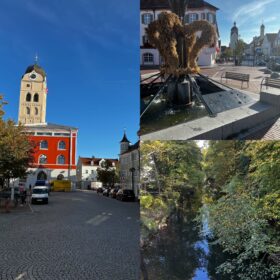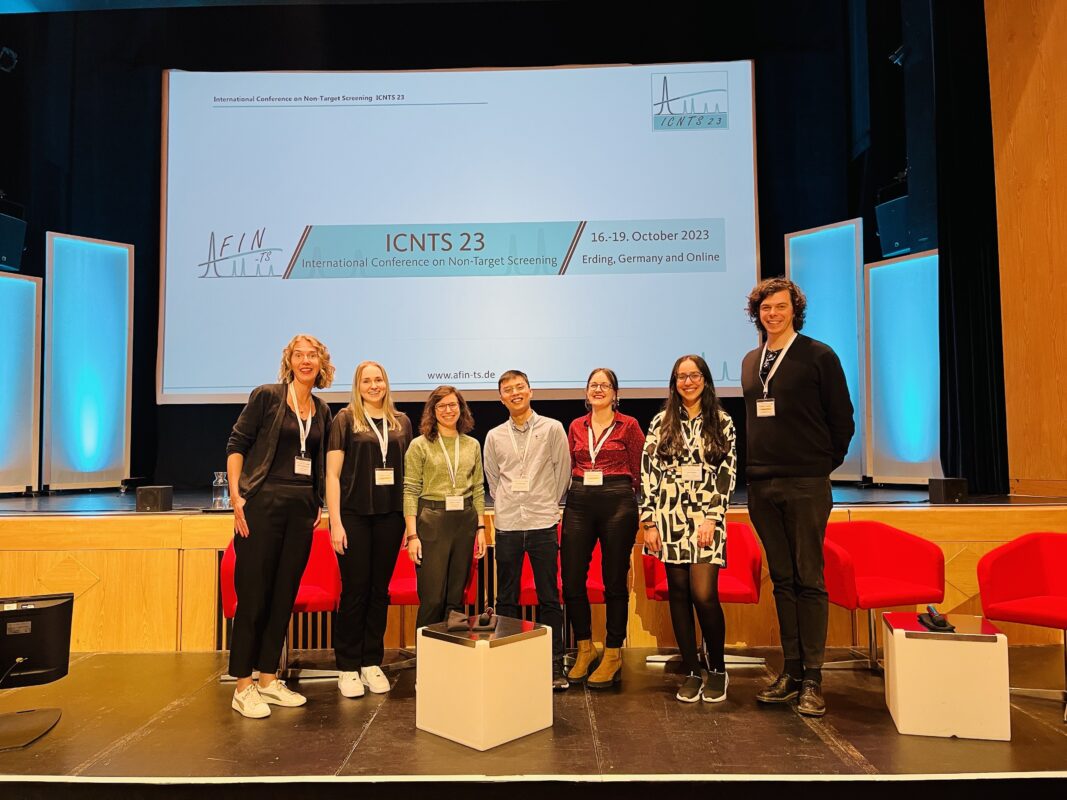In the middle of October, a large part of our group had a chance to present and discuss our research in ICNTS 2023 in Erding, Germany. ICNTS, International Conference on Non-Target Screening for long, is a biannual conference focused on detecting, identifying, and characterizing unknown chemicals with high-resolution mass spectrometry and other techniques. The rather focused topic in combination with a super location has for years set the scenery for fruitful discussions and been the meeting point for the community. For our group, some of the takeaways were related to the emerging need to understand the scope of the NTS methods and associated computational methods in regard to chemical space coverage as well as the characterization of the detected chemicals regarding toxicity and quantity.
The chemical scope of the NTS methods was highlighted in several talks across the meeting. To address the problem, the group of Saer Samanipour has evaluated that only 2% of the potential chemical contaminants are reported in current NTS studies for environmental samples. Simultaneously, our recent revision of the papers on NTS of water samples revealed that from thousands of detected chemicals, only a fraction (none to a few hundred) are identified with confidence of level 1. In practice, this means that though NTS does widen our understanding of the chemicals present in environmental samples and does reduce the bias regarding the preselection of chemicals for monitoring, a lot of the chemicals are still left unidentified or even undetected. This indicates that the analytical methods as well as the computational methods used in NTS need to be significantly generalized to discover and identify the wide range of the chemicals out there.
Regarding instrumental analysis, our good collaborator Frederic Been from VU Amsterdam demonstrated his ML algorithm for evaluating the quality of the MS2 spectra. This might open up possibilities to understand the variability in identification rates across methods and labs. From our group, Amina Souihi, Wei Chieh “Harry” Wang, and Louise Malm presented their contributions to understanding the scope of the NTS methods in terms of LoD and quantification of tentatively identified chemicals.

So how to guarantee that the NTS methods do detect the truly relevant chemicals? Working directly with the tandem mass spectra instead of the structures of the tentatively identified chemicals is an increasingly popular segueway. In 2022 we suggested first approaches to quantify and estimate the in-vivo toxicity of the detected chemicals based on the empirical analytical information available from the chromatography and HRMS. This year Helen Sepman from our group led an initiative MS2Quant for quantification of the detected chemicals directly based on tandem mass spectrometric information without the need for complementary chromatographic analysis that was required in the first approach developed by Emma Palm. Helen also presented this strategy in ICNTS while Yvonne Kreutzer showed some of our new strategies for extracting toxicity-relevant information from the tandem mass spectra. Furthermore, Kasia Arturi from Eawag also presented an approach to evaluate in-vivo toxicity from the tandem mass spectra with the aid of SIRIUS+CSI:FingerID. This tool, called MLinvitroTox was further used to prioritize chemicals in surface water analysis and was able to identify some more chemicals compared to the target analysis.
Furthermore, several outstanding presentations on the application of NTS for different samples from food, and water, to consumer products were introduced. Compared to the ICNTS 2021 a new session on NTS for materials was introduced, where also Drew from our group introduced his latest findings on hazard direct screening of recycling products on the example of textiles.
We enjoyed Erding and ICNTS to its fullest and are happy to plan for coming back in 2025. Our big thanks to the organizers Stefan Bieber and Thomas Letzel!
Stay tuned for more coming on our NTS research later this year!


